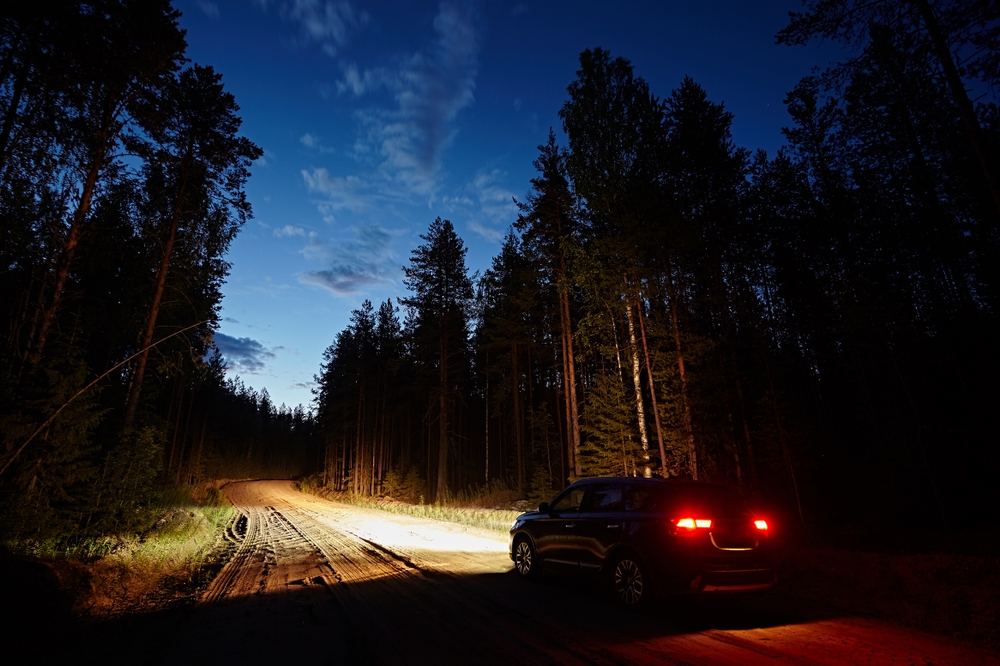MicroLEDs revolutionise the headlight

Working together, Nichia and Infineon have unveiled a compact,
ground-breaking automotive light engine with over 16,000microLEDs.
BY RICHARD STEVENSON, EDITOR, CS MAGAZINE
Over many years, the car industry has been migrating from traditional light bulbs, including halogens, to ever-more-powerful LEDs – they are more efficient, more robust and longer lasting. This transition began with red brake lights, and more recently these sources have played an increasing role in indicators and headlights, with many top-of-the-range models now sporting a matrix LED technology that enables an adaptive driving beam.
Now matrix LED technology is taking a leap forward, thanks to a partnership between two giants of our industry, Nichia and Infineon. At the start of this year they unveiled an incredibly compact light source for the headlamp that’s free from mirrors, the norm for a high-definition matrix technology, and packed with far, far more LEDs than ever before.
This product, drawing on Nichia’s expertise in LEDs and Infineon’s pedigree in drive electronics, is described by this pair as a micro-Pixelated Light Solution. It enters a market that is starting to see matrix LED technology trickle down from high-end cars to the likes of VW, as well as some models from Opel, which places a premium on lighting performance.
The number of LEDs in the matrix LED headlights already on the road can be as few as just 8, although units housing 70, 84 or 102 LEDs are also common.
“84 pixels is already a very good solution, in terms of matrix illumination of the road,” comments Robert Remmers, Infineon’s Product Line Manager for the jointly developed automotive light engine that houses thousands of microLEDs. “However, what customers want is a finer graduation of the light, or finer control of the light on the road.”
Remmers adds that with 16,384 microLEDs, their collaboration’s automotive light engine offers all this and more: “For example, you could mark certain tracks on the road, where you need to drive through a construction site, or have illumination of pedestrians on the side of the road.”
Another strength of the new automotive light source over the incumbent is its modus operandi. This difference is comparable to the difference between LCD and OLED TVs – with former, all the pixels are on all the time, while with the latter, they are only on when needed, saving energy.
As well as requiring the LEDs to be constantly on, the incumbent form of high-definition matrix headlight is compromised by the incorporation of mirrors, leading to bulky units. Remmers compares their size to that of a brick, adding that they are also expensive, heavy and difficult to implement.
“If you look at our solution, it is essentially just one small chip,” enthuses Remmers, who suggests that the size of this unit is around just twice that of a computer mouse.
The new light source has been put through its paces in driving tests. “We see that it’s very bright,” remarks Remmers, who attributes the exceptional intensity of light projection to the high drive currents for the microLEDs, as well as their high level of efficiency.
If even brighter sources are needed, car makers could consider headlights based on lasers, a technology pioneered by BMW and Audi. However, this class of headlight has failed to gain much traction in the market. That may be because its capability to illuminate several hundred metres of road is only of much value when driving at speeds beyond that allowed in many countries. Many drivers may argue that it’s actually more useful to have higher fidelity of lighting over a shorter range, a feature provided by the micro-Pixelated Light Solution.
It has taken three years for Nichia and Infineon to co-develop and launch their revolutionary automotive light engine. While some might think that’s a long time, it’s not when you consider all the work that’s needed to prepare a product for the automotive market. This sector is renowned for its rigorous, conservative approach to qualifying parts.
Another factor to consider is the level of innovation that’s been needed to bring this particular product to market. Part of the development involved the design of a new 50 µm by 50 µm microLED by Nichia to ensure that it would illuminate the road with sufficient brightness. Both parties then had to work together to ensure a sufficiently robust connection between the emitters and the driver IC chip, produced by Infineon.
“If you take all these factors into account, I would say it’s truly amazing how we have managed to do this,” remarks Remmers.
Ownership of the product lies with Nichia; it is responsible for generating sales. However, the first model to be fitted with the revolutionary headlight will not come from Asia, but Europe.
This does not surprise Remmers, who points out the high level of innovation introduced in European luxury cars. “It’s just a natural evolution that it started here in this particular case.”
The new automotive light engine, sporting 16,384 microLEDs, draws on Nichia’s prowess in LEDs and Infineon’s expertise in silicon IC drive electronics.


































